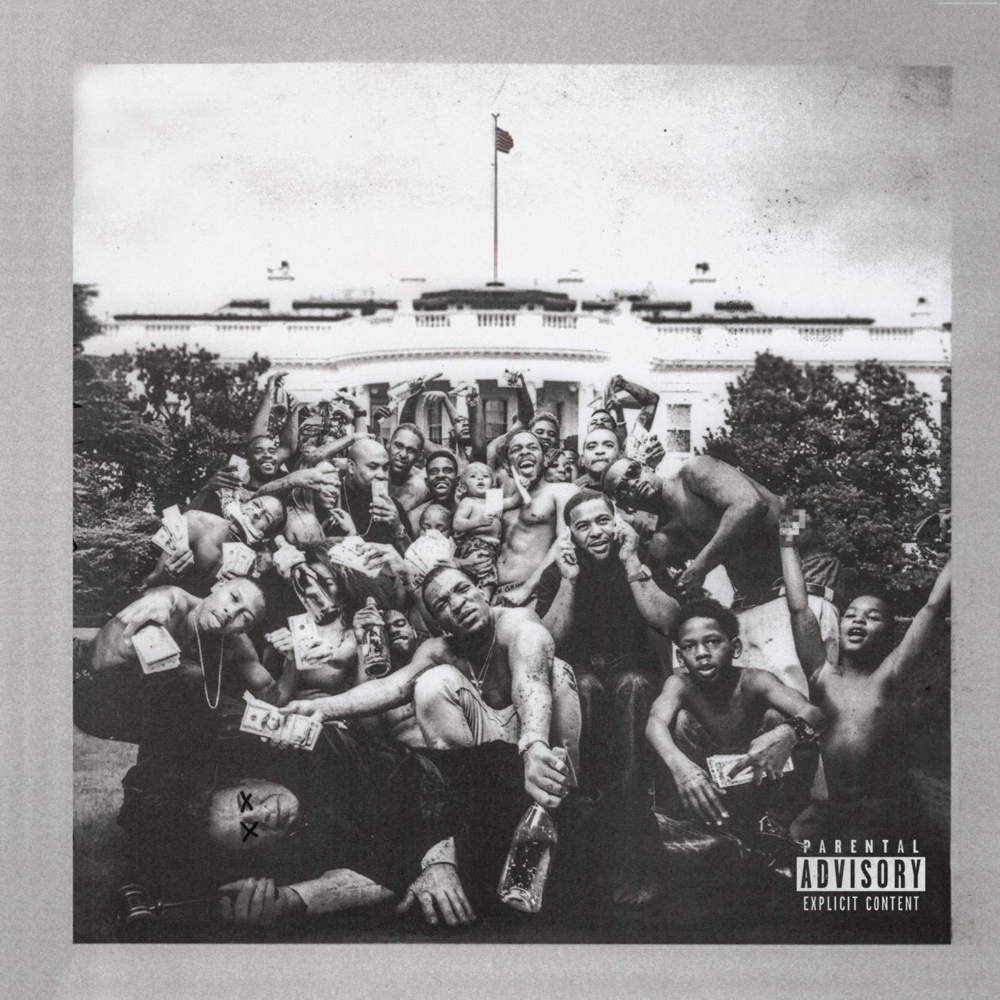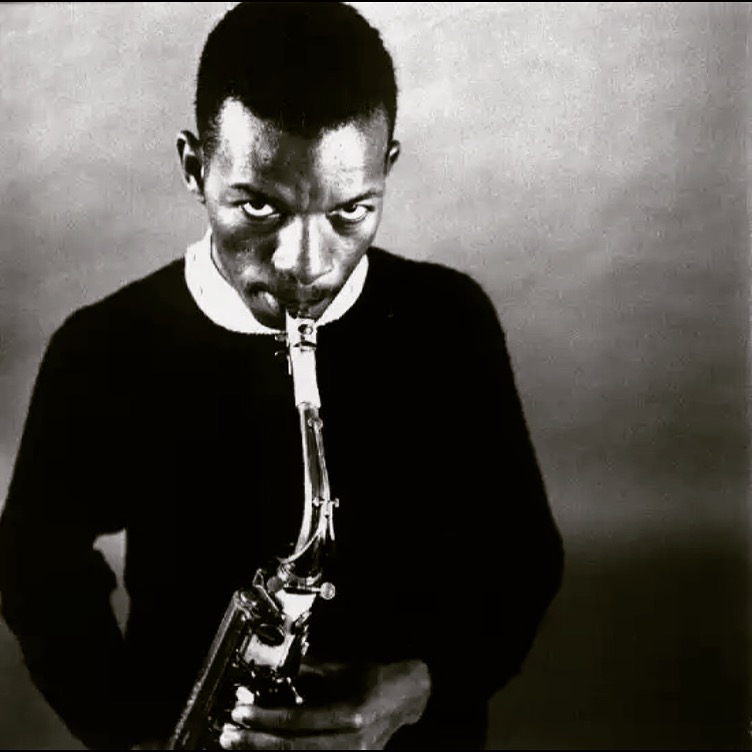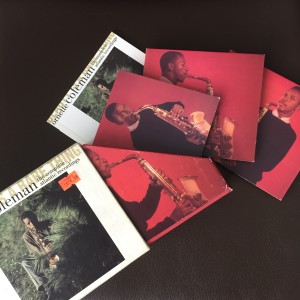
My Favorite Albums of 2015
To Pimp A Butterfly: Kendrick Lamar
This album flows like a play, as it takes through the internal struggles, dialogues, and different personalities of Kendrick Lamar within psychosocial contexts. Whether rapping over uptempo swing as in “For Free?”, with the voice of an intoxicated man in deep anguished as in “U”, or in the funkiest of tunes as in “King Kunta”, Kendrick delivers highly personal content through incredible rhythmic phrasing. The continuous surprises in the stellar arrangements and highly stimulating production make for a remarkably dynamic album.
[/x_text]
[x_text]Black Messiah: D’Angelo
14 years after his acclaimed album Voodoo, D’Angelo delivers this highly anticipated and long overdue follow up. In my opinion, this is even better than its predecessor. To me, D’Angelo always sounds like if he is singing to himself while walking down the street. His melodies are so organic and groove in the sleekest ways. I really hope he doesn’t wait another 15 years before the next one.
[/x_text]Last year, Antonio brilliantly represented Jazz musicians and drummers in Hollywood through his groundbreaking work in Iñárritu’s genius film Birdman. In 2015, Antonio continued his high level of productivity by releasing two albums as a leader. Meridian Suite is in the contemporary jazz realm and was heavily influenced by his experience writing for film. Three Times Three is a trio of trios with some of the biggest names in jazz including Brad Mehldau, Joe Lovano, John Scofield and Christian McBride. All trios are fantastic, but the combination of Antonio and Brad (with Matt Brewer on bass) is perhaps my absolute favorite recording of the year. Both albums are highly recommended. Below is an interesting promo video for Meridian Suite.
[/x_text][x_text]Stretch Music: Christian Scott aTunde Adjuah
Christian Scott aTunde Adjuah continues to establish himself as a leader in today’s Jazz scene, or as he calls it, Stretch Music. The trumpet player from New Orleans has one of the most beautiful and recognizable sounds today. His long and high notes layered over intense and insistent beats create a pulling effect that reminds me a little bit of Radiohead and Bjork. One cool thing about this album is that you can purchase it as an app that allows you to mix the volumes of all the instruments, adjust the tempo, and read the music charts. This is ideal for musicians looking to practice or play along to the record.
[/x_text]As its name indicates, this album is absolutely epic. Kamasi goes for over the top intensity with a 10-piece jazz band, strings, choirs, and a fascinating combination of modern, classic and world rhythms. This is one of the most acclaimed albums of the year.
[/x_text][x_text]
Vulnicura: Bjork
This is Bjork’s breakup album after ending her marriage with artist Matthew Barney. We can feel her sadness and loneliness through the enormous space created by lushes of orchestral arrangements that support her typical odd vocal phrasing. The lyrics are deeply personal and take us inside Bjork’s healing process.
[/x_text][x_text]High Risk and Brazen Heart: Dave Douglas
Trumpeter Dave Douglas never ceases to experiment with different bands in different contexts. High Risk includes the electronics of Shigeto, along with Johnathan Maron on bass and one of my favorite drummers, Mark Guiliana. This album is an interesting and exciting mix of jazz and electronics. Brazen Heart involves his longstanding acoustic jazz band, and showcases a set of original compositions along with two spirituals. Below is a live performance of the former.
[/x_text][x_text]Fast Future: Donny McCaslin
After listening to this album, it does not seem that surprising that sax player Donny McCaslin and some of his band members were recently hired by David Bowie to accompany him in his upcoming album. Fast Future is another excellent combination of jazz and electronics that features an array of intense and rewarding moments. Below is a performance at one of my favorite places in NYC, the 55 Bar.
[/x_text][x_text]
Woodwork: Matthew Stevens
Guitarist Matthew Stevens debuts as a leader after establishing himself as a prolific sideman in some of the most prominent bands today. The relationship of the bandmates on this one dates back to their school days. We can hear this longtime connection in the cohesiveness of the group.
[/x_text][x_text]We Are The Drum: Kendrick Scott Oracle
Kendrick plays the drums with a fascinating combination of finesse and explosiveness. He is a fantastic band leader and continues to put beautiful albums out there. This is one of my current favorite bands.
[/x_text][x_text]Kaleidoscope: Andréa Wood
After their year-long residence in India, Andréa Wood and her band came back to New York and recorded a wonderful album of mixed styles including Jazz, pop, R&B and hip-hop. Donny McCaslin appears as a guest, as well as hip-hop artist Nick Wood (Andréa’s brother), whose interludes give the album personality and flow.
[/x_text][x_text]Tokyo Adagio: Charlie Haden and Gonzalo Rubalcaba
This is an album of ballads played live in Tokyo by two genius musicians who collaborated for more than 30 years. Gonzalo is a brilliant pianist from Cuba, and Charlie Haden was a legendary bass player who passed away shortly prior to the album’s release.
[/x_text]
Ornette Coleman and Music Therapy
Ornette Coleman, one of the most legendary and influential musicians of all time, passed away on June 11th, 2015, at the age of 85. I first heard of Ornette when my teacher Omar Tamez got me into all these amazing jazz albums back in Monterrey, Mexico. I also remember that during my first year at Berklee College of Music, there was a time when I couldn’t stop listening to the “Beauty is a rare thing” box set I bought at one of the CD stores around school. It was the summer of 2006, and I remember this music had a big impact on me, as I searched for my own identity while living in a new country within the structure of formal music education.
The music of these records really moved me. It felt so organic, honest, and personal. I loved the melodies, the interaction, the feel. One of my favorite pieces was “Una Muy Bonita” (1960), which featured the ‘original quartet’ formed by some of my favorite musicians (Ornette Coleman-sax, Don Cherry-trumpet, Charlie Haden-bass, and Billy Higgins-drums).
Ornette is regarded as one of the pioneers of free jazz, partly because of his album “Free Jazz” (1960), in which there are two quartets playing together.
https://youtu.be/xbZIiom9rDA
But even if regarded as a pioneer of free jazz, Ornette’s work still relied heavily on composition. These were often melodies without a set sequence of chords, played by a band without a piano player. Ornette liked to improvise without feeling confined to a pre-conceived harmonic structure, and his play in between notes was often perceived as out-of-tune by colleagues and critics.
https://youtu.be/bJULMOw69EI
The day Ornette passed away, his influence was felt on many circles in social media, where countless people expressed gratitude and admiration for his life and vision. Many of the comments stated by musicians and artists identified Ornette as an influential source of inspiration in their own search for authenticity. Guitarist Pat Metheny wrote about it 16 years earlier in the preface to the book Ornette Coleman: His life and music by Peter Niklas Wilson:
“He has inspired me -and by this time it must be thousands of other musicians- to answer to a standard that demands that we look into our own hearts and minds to see what we may have to offer in our own personal musical languages -if we can only muster up the courage to listen to the songs inside of us the way Ornette has done.” – Pat Metheny
The process of exploring our authentic musical self is something we often work with in music therapy. At Berko Music Therapy, we often help people access the music resources they have acquired throughout life, whether their experience includes any form of training or not. This often results in a creative process where people play instruments they have never played before, which can facilitate a deep level of introspection, self-expression and genuineness. Perhaps Ornette was thinking along those lines when playing violin and trumpet, instruments in which he had no formal training.
https://youtu.be/y09k4zyIfO8
One of the things that separated Ornette from other musicians was his uncanny ability to create his own world. Much like a Miro, or a Pollock, he defined his own rules and reached a very unique and personal level of creative expression while defying established artistic and societal norms and mediums. We can learn a lot from the expansive ways in which Ornette thought about music. In the following interview, he at times almost sounds like a music therapist.
“My real concern for the things that I would like to perfect in music is to heal (suffering, pain, solitude), when you are depressed, music seems to be a very good dose of light that causes people to feel a lot better.” -Ornette Coleman
More selected videos:
Learn More

Miles Davis – Adapting Through Time
Miles Davis was born on May 26th, 1926, in Alton, Illinois. He would go on to become one of the most celebrated artists of all time through an illustrious career as a trumpet player, jazz musician, composer, and bandleader. Recently on the 88th anniversary of his birth, the street where he used to live in Manhattan’s Upper West Side was renamed ‘Miles Davis Way’.
To honor that, we will look at one of his greatest traits: the ability to understand and adapt to his surroundings through time.
Perhaps similarly to Picasso or Bob Dylan, Miles remained on the edge by changing styles and approaches multiple times, depending on what was happening in the world around him.
He continuously surrounded himself with the brightest young musicians of the time. John Coltrane, Wayne Shorter, Herbie Hancock, Tony Williams, Keith Jarrett, Chick Corea, Jack Dejohnette, Dave Holland, were among those hired at a young age by Miles before going on to become huge names themselves.
Let’s look at a brief summary of the different periods of his career.
Bebop; The early beginnings. (mid 40’s)
At 18 years old, Miles Davis moved to New York City to attend Julliard School of Music and meet his heroes Charlie Parker and Dizzy Gillespie. He soon got to play in Parker’s band.
Becoming A Leader (late 40’s, early 50’s)
Miles was an innate leader and quickly started recording his own albums with the best musicians in town.
https://www.youtube.com/watch?v=gHKnvwoGg0Y
Orchestra (Late 40’s and late 50’s)
He collaborated with the brilliant arranger Gil Evans in an orchestral setting. Together they recorded beautiful albums like Birth of The Cool, Porgy and Bess, Sketches Of Pain and Miles Ahead.
https://www.youtube.com/watch?v=lvcU_v8ruGE
First Quintet (Mid 50’s)
The first quintet was his first great band. It had what many consider to be the greatest rhythm section of all time with Philly Joe Jones (drums), Paul Chambers (bass) and Red Garland (piano). It also had John Coltrane. Miles and Coltrane were very different and created an exciting contrast. (Coltrane comes in at 2:35).
Kind of Blue (Late 50’s)
Coltrane was still in the band but the rhythm section changed. The band got into modal music with very few chords and basically only one scale. This is a live version of “So What”, a tune from , Kind of Blue, one of his most famous albums.
Second Quintet (mid sixties)
At this point Miles had a completely new band with Tony Williams (drums), Ron Carter (bass), Herbie Hancock (piano) and Wayne Shorter (sax). Coltrane and Ornette Coleman were among those playing freer forms of jazz with their own bands. Miles incorporated certain aspects of free jazz with this band. This is also one of the greatest rhythm section of all time.
Electric (70’s)
Miles would not pass the opportunity to play for huge crowds when electric instruments and amplification made it possible. He decided to go electric and play open rock grooves. The album Bitches Brew is from this time. This is at Isle of White festival.
http://youtu.be/GmJwV3Xkl8M
80’s
Miles embraced the decade and got into the vibe of the time. He played several hits including Michael Jackson’s Human Nature.
In 1991, Miles died of health complications at the age of 65. What would Miles be playing today? The question will forever linger.
Learn More
Top 10 Albums of 2013
There is a lot of fantastic music out there and it is always tough to leave some out.
The following is a list of my personal favorites that came out in 2013.
1. Wayne Shorter, Without A Net
Wayne Shorter-sax, Danilo Peres-piano, John Patitucci-bass, Brian Blade-drums
2. Kanye West, Yeezus
3. Dave Holland, Prism
Dave Holland-bass, Kevin Eubanks-guitar, Craig Taborn-keyboard, Eric Harland-drums
4. The Pedrito Martinez Group, The Pedrito Martinez Group
Pedrito Martinez-congas/vocals, Ariacne Trujillo-piano/vocals, Alvaro Benavides-bass/vocals, Jahir Sala-percussion/vocals
5. The New Gary Burton Quarter, Guided Tour
Gary Burton-vibraphone, Julian Lage-guitar, Scott Colley-bass, Antonio Sanchez-drums
6. Derrick Hodge, Live Today
7. Drake, Nothing Was The Same
8. Albert Heath/Ethan Iverson/Ben Street, Tootie’s Tempo
Albert Heath-drums, Ethan Iverson-piano, Ben Street-bass
9. Kendrick Scott Oracle, Conviction
Kendrick Scott-drums, Mike Moreno-guitar, Taylor Eigsti-piano, John Ellis-reeds, Joe Sanders-bass
10. Cecile Mcloren Salvant, Woman Child
Cecile Mcloren Salvant-vocals, Ahron Diehl-piano, Rodney Whitaker-bass, James Chirillo-guitar, Herlin Riley-drums
Other great ones: Chris Potter/The Sirens, Craig Taborn Trio/Chants, Antonio Sanchez/New Life, Atoms For Peace/Amok, Eric Revis Trio/City Of Asylum, Dave Douglas Quintet/Time Travel, Ethan Iverson/Customs Are Mandatory, Tim Berne’s Snakeoil/Shadow Man
Learn More
